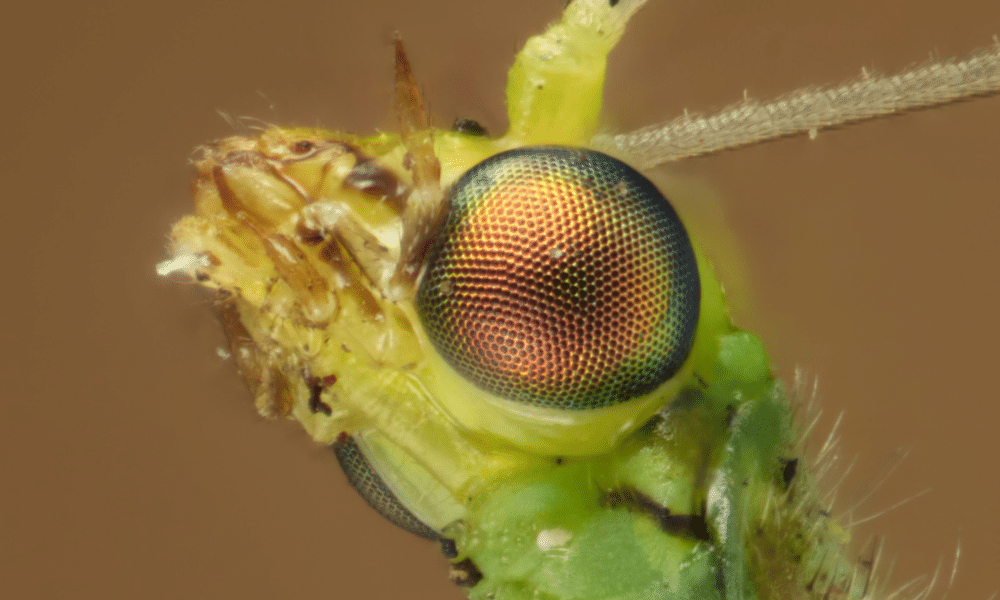If you have lacewings in your garden, you are probably wondering if they pose any threat to you or your loved ones. You know that lacewing larvae are natural predators of common garden pests in your garden, like aphids, but can they bite or sting humans? Will they attack if you bump into them? Are lacewings dangerous?
Yes, lacewings can bite. However, lacewings are not dangerous. Although lacewings can bite, they rarely do and if they do, it is by accident. The bites are unlikely to cause any long-term damage too.
Do Lacewings Bite or Sting?
Some insects search you out for a meal, like mosquitoes. However, adult lacewings rarely bite humans and definitely do not feed on them. Adult lacewings eat nectar, pollen, and honeydew from plants.
They do not have stingers or barbs that can harm a human, making them essentially harmless if not a little irritating.
Lacewing larvae are known for their ability to attack and eat pests like mealybugs, thrips, mites, and aphids. In fact, lacewing larvae can eat over a thousand aphids and thrips a day.
Lacewing larvae use a pincher-like mouth to pierce and pinch their prey. While lacewing larvae have the ability to bite and have very strong jaws for their size, it is not common that a human would get bitten by lacewing larvae. But it can and does happen.
Lacewing larvae do not seek out humans to bite, but if you brush up against them in your garden, you may find yourself bitten by mistake.
What Does a Lacewing Bite Look Like?
If you were to get bitten by lacewing larvae, you would notice a small, red, itchy bump like the kind you get when a mosquito bites you. It may itch for a few days. After a few days, the bite should diminish.
Although rare, some people are allergic to lacewing bites. They may have a more severe reaction including swelling, intense itchiness, or a rash.
If you feel you are having a severe reaction to a bug bite, regardless of what you think bit you, be sure to seek out appropriate medical attention.
Do Lacewings Have Mouths?
Lacewings do not have mouths in the traditional sense. Lacewings are a part of an insect subgroup named neuropterans. These are predatory insects that have a unique mouth that does not coincide with other traditional insect mouths.
Lacewing larvae have a pincher-like mouth that is hollow on the inside of the pinchers.
Lacewings cannot eat solid food. They survive off of the juices of their prey. It is thought that lacewing larvae will prefill their pinchers with special saliva that begins to disintegrate their prey, allowing them to slurp up whatever they are feasting on at that moment.
Do Lacewings Have Teeth?
Lacewings do not have teeth. They are not capable of eating solid food like many other insects or animals. Instead, they can only eat the juices of the aphids, mealybugs, thrips, or other soft body insects.
Lacewing larvae have pinchers instead of teeth. They use their pinchers to pierce into the body of their prey. Their pinchers have hollow tubes inside them, allowing them to use their pinchers as a straw to suck the nutrients they are after.
Do Lacewings Suck Blood?
No, lacewings do not suck blood. In fact, both adult and larvae stage lacewings do not seek out nor feed on humans.
Adult lacewings feed exclusively on nectar, pollen, and honeydew from flowers and plants. Lacewing larvae are natural predators but only feed on common garden pests and other soft-bodied insects. Lacewing larvae prefer to find aphids, mealybugs, caterpillars, and thrips as their food source.
Bugs and insects that suck blood include mosquitoes, ticks and lice. These insects all seek out humans or animals to feed on. It is best to use prevention methods to avoid coming in contact with these insects.
Summary
Although lacewings are natural predators of common garden pests, they do not seek out humans as a food source. Lacewing larvae may accidentally bite you if it comes in contact with your skin while inside your garden.
To help prevent this, you can wear long sleeves and gloves while gardening. If you do get a bite, it is usually small, red, and itchy, similar to a mosquito bite. If you develop rashes or intense pain, seek medical attention immediately.
Lacewing larvae do not have teeth or mouths. Instead, they have pinchers that are specially designed to be hollow inside. This allows them to pierce the body of their prey before sucking the juices out. Insects that have this type of mouth system are called neuropterans.







